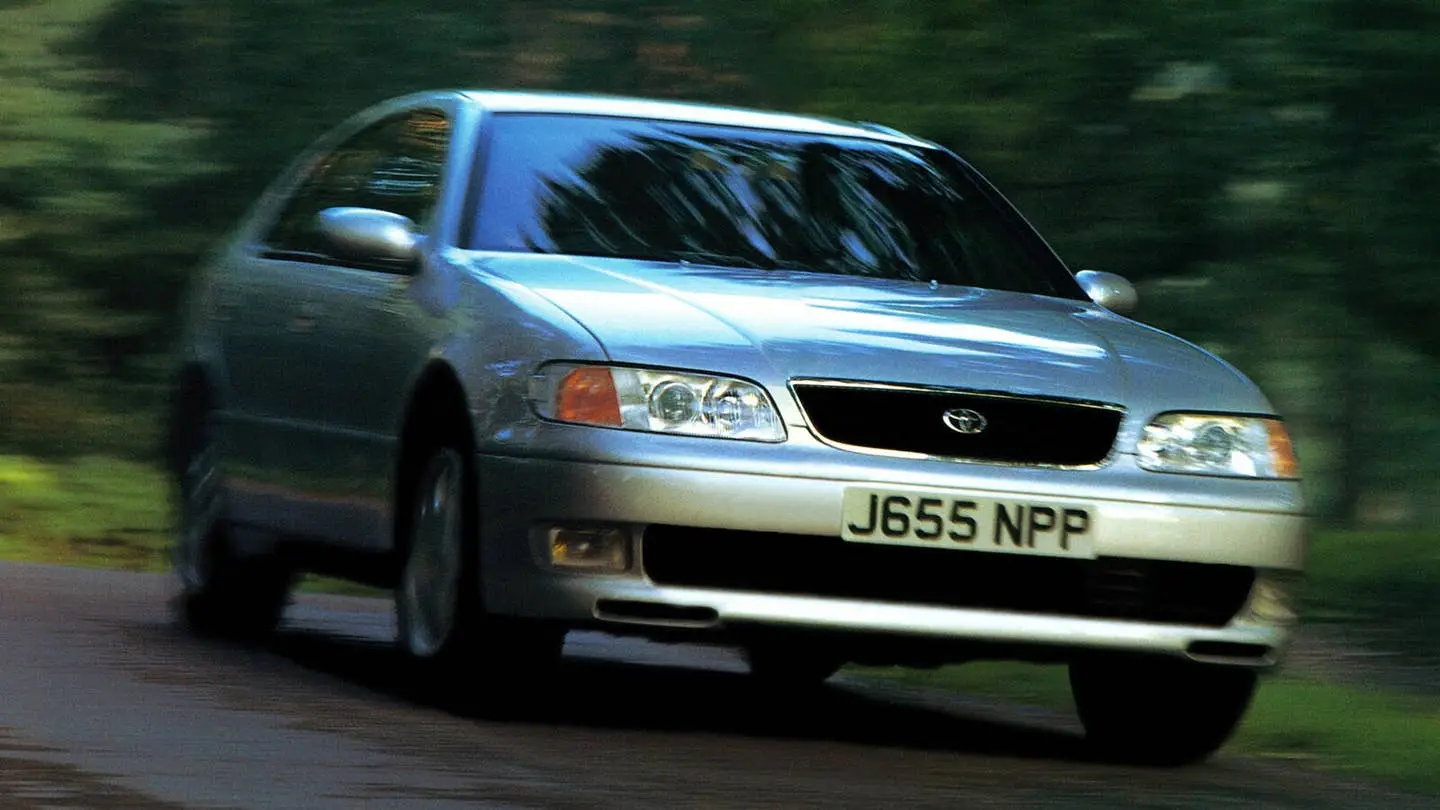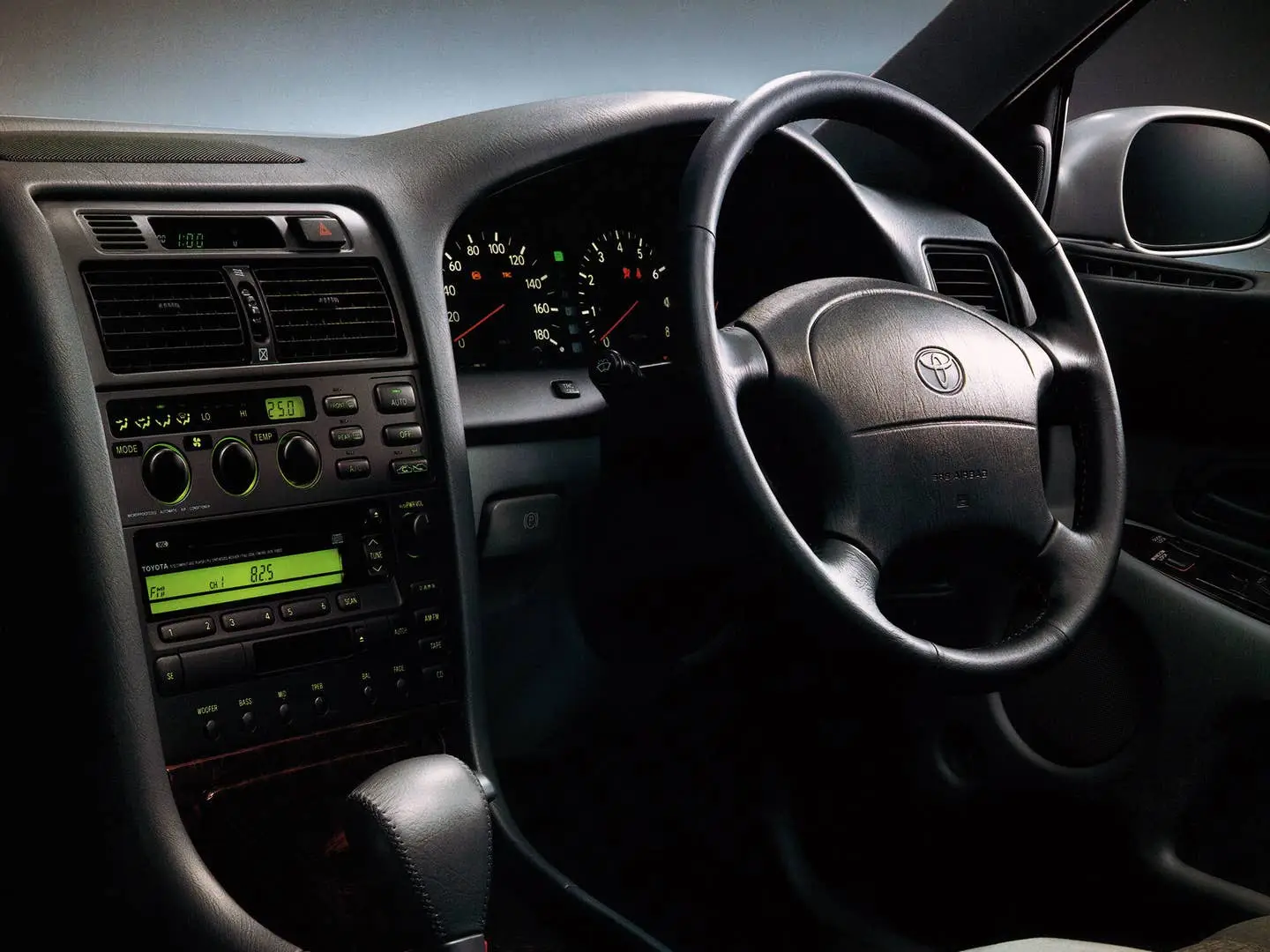Carmakers stopped having fun with audio systems just as car audio got really good.

Toyota has always paid close attention to in-car audio quality, which I’m grateful for. The Japanese carmaker’s dedication to audio dates back to the 1990s, and possibly further back, with models like the Toyota Aristo and Sera, which my colleague Adam has written about at Jalopnik. Like the Sera, the Aristo featured some killer audio features, such as physical DSP controls that ran your tunes through different filters, of sorts, to give your listening experience a different vibe. These controls are something the majority of people won’t miss in modern audio systems, especially with the ubiquity of Apple CarPlay and Android Auto, but they highlight how car audio is no longer fun and experimental.
The Toyota Aristo is the predecessor to the Lexus GS, and it’s how the car was known in its native country of Japan. The Aristo had a DSP button that lived on the dash and toggled different modes such as Hall, Live, Cathedral, and Dome. That sounds like something you’re more likely to find on a nice home stereo, and, yet, Toyota decided that the Aristo needed some DSP goodness right on the dash, as the YouTube channel, Battles Digital, shows in this short vid:
Whether you would make use of those modes in your day-to-day listening is less the point than Toyota’s anticipation of the need for that audio feature in the first place. Imagine being one of the Aristo’s designers and thinking, “You know what this car really needs? A button that makes Donald Byrd’s albums sound live, dammit!” It’s the peak of superfluous controls, and yet I miss them.
In the modern age of car audio that likely blows away anything from the 1990s and 2000s, audio systems are now suffering from a lack of fun. Almost like they’ve become too good for their own good and are merely content taking a backseat to interfaces from Apple and Google. Audio is objectively better today, but it’s not necessarily yielding more fun listening experiences.
One of the things that doesn’t get brought up enough is that CarPlay and Android Auto have homogenized in-car audio systems for the sake of convenience. It’s a streamlined experience, sure, but one that is deliberately predictable and therefore no longer capable of pleasantly surprising us with something like a “Cathedral” DSP button. Just imagine listening to Martin O’Donnell’s Halo score or Howard Shore’s Lord of the Rings soundtrack with that setting? I’m getting goosebumps.
But back to the audio systems that once made such listening experiences possible. Perhaps even more than the internal combustion engine, it seems carmakers have essentially perfected the car stereo. I’m often blown away by what new car stereos can do, which is all the more reason I find the default car audio experience bothersome. I’m talking about wireless Apple CarPlay, the pinnacle of convenience. What a snooze! Give me something to play with; give me settings to tweak—ideally with a dedicated button on the dash, as in the case of the Aristo.

By now, maybe you’ll have guessed that, yes, I am an audiophile. I know. I know. I’m also annoyed by this fact, but humor me. Modern Lexus models boast Mark Levinson Audio while high-end Toyotas feature JBL. Obviously, audio matters, and carmakers use it to charge more money for a certain model.
The impressive audio quality that most modern cars come with makes me question our obsession with wireless everything—wireless charging, wireless CarPlay, and Android Auto. The modern car cabin is awash in unseen, untethered signals floating through the air for the sake of convenience. The problem I have with that is even most of the latest Bluetooth protocols are not up to the task of wirelessly sending full-fat audio, let alone lossless or hi-res audio files that Apple itself brags about.
What good is free lossless and hi-res on Apple Music if you’re piping it through Bluetooth to your car’s head unit? You lose that fidelity, which is admittedly not that noticeable in a car. There’s too much going on outside as the world rushes by to miss the low- and high-end frequencies that wireless transmission trades for ease of use. But then what’s the point of all those speakers and crossovers and amplifiers that already come with that expensive Lexus or Toyota?
I asked Toyota once if the native interface its developers made, known as the Audio Multimedia System, would respect the resolution of audio streamed via built-in streaming apps, such as those from Apple or Amazon. I also asked if they would later support Tidal or Qobuz. I mean, if there was ever a use-case for that fancy Mark Levinson system, then it would be in streaming hi-res audio, right? Toyota was unable to answer my question, which means they are likely not too concerned with the quality of their built-in music apps. Thus, I would be more inclined to keep using CarPlay, which I find irksome and boring.
It’s just a shame that there are no more dedicated DSP buttons like in the Toyota Aristo, no more tiny equalizer sliders that correspond to different frequencies in our music. At most, you can dig into a setting behind a massive touchscreen and boost the bass or the treble. Ditto for fade and balance settings. But there’s no longer much fun to be had. It just seems all these great car audio systems are all dressed up, and, yet, they have nowhere to go.




